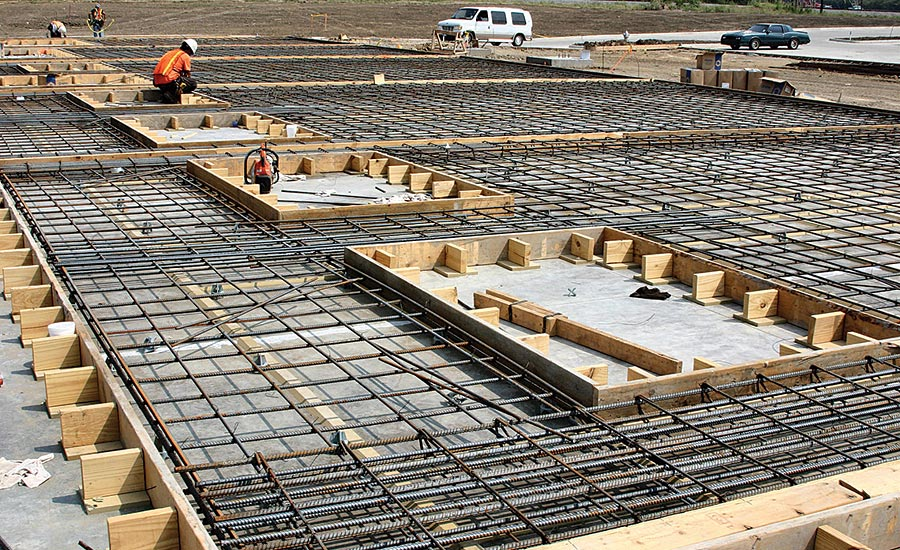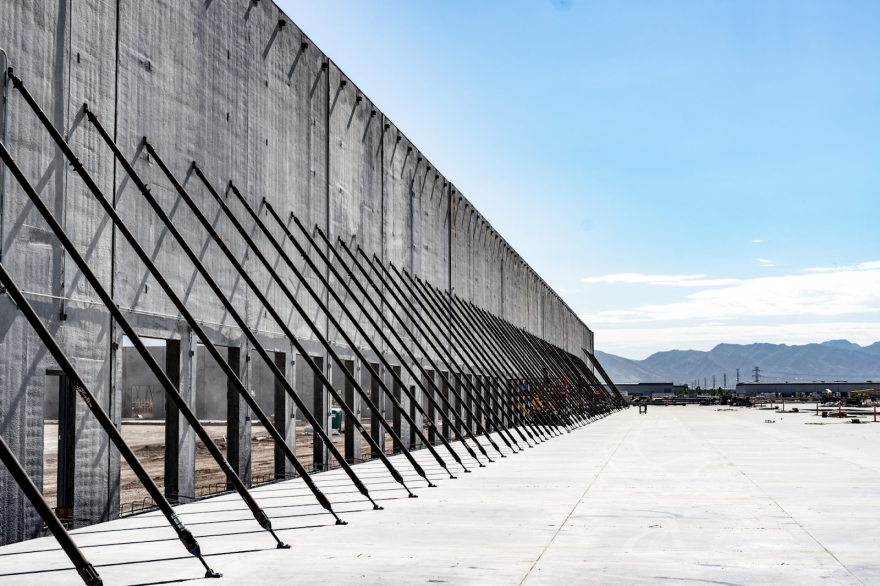By Cal Reichstein
The use of tilt-up construction has been around for hundreds of years. The procedure has been used to erect the framing of homes and cabins and even for walls surrounding forts and small towns. Today it’s one of the most common and cost-efficient ways to construct office, retail, and industrial buildings. The larger the square footage of the structure, the more sense it makes to go the tilt-up route.
In modern-day tilt-up construction, form release or form oil is used to coat the forms (usually wood, but aluminum and steel forms can also be used) and rebar (cut to match the final design) to prevent the concrete from sticking to the forms. Once the concrete slab is poured into these coated forms and allowed to sufficiently cure, the slabs are tilted vertically by crane and set on foundational footings to form the external structure of the building. Each wall slab is temporarily braced until the roof ties the structure together.

Bond Breaker (Dayton Sure Lift):
Sure Lift is a water-based, liquid bond breaker from Dayton Superior. The product is V.O.C. compliant and membrane-forming, to provide clean and easy lifting of the concrete tilt panels. When applying the product, you want to use a high-quality, low pressure, sprayer to provide an even coating on the surface of the panel. The Dayton Spray-Pro power system is a good example of a quality sprayer to pair with the bond breaker. Sure Lift, along with the Spray-Pro, will provide minimal panel residue, resists construction foot traffic and meets the moisture retention properties when applied to steel-troweled surfaces. To verify the integrity of the bond breaker coat, sprinkle water on the casting bed. The water should bead up, as it would on a freshly waxed car. When dried, the surface of the panel should have a soap-like feel and be evenly coated on the substrate, any light areas may require re-application. Without proper and even coating, you may see the panels sticking together and added hours of labor on your project.
At 70 degrees, Sure Lift takes approximately two hours to dry. Keep in mind that thicker coats, higher humidity and lower temperatures, will extend the drying time. This Dayton product comes in two different sizes, a five-gallon (18.93 liters) pail and a fifty-five gallon (208.20 liters) drum. Despite the size chosen, this product should be stored in its original container, tightly secured, and at a temperature above 32 degrees. For the fifty-five gallon drum, store horizontally to prevent moisture accumulation on the drum head. The product has a nine-month shelf life, from the date of manufacture.

Energy Efficiency:
The concrete walls are an excellent insulator on its own with the added benefit of fewer seams and joints in the building. While adding to the cost, insulation can be installed on either side of the wall or sandwiched between two wall panels, making the internal temperature of the building more consistent and reducing the energy costs moving forward.
Points of Consideration Involving Tilt-up:
There’s a few things to consider when planning a tilt-up structure. Generally this construction method is used in rural or suburban areas where the available space provides room to form and lay out panels. Topography is another consideration; hilly areas will make tilt-up construction more difficult. While establishing a work schedule, climate will also play a role. Colder climates will require more insulation, adding time. Warmer climates, however, allow a crew to form and erect walls in a matter of days. Lastly, consider the height of the structure - if it’s two to five stories high with straight planes, tilt-up is a viable option.
Benefits of the Tilt-up Method:
Because you can get materials and accessories locally (at Outpost Construction Supply), cost of materials and lead times are already at a minimum. The walls can be done quickly and effectively, enabling new structures to be vertical and enclosed as soon as possible. Not only does this keep your project on schedule, it also gets your workers, tools, and materials out of the weather elements sooner. This method is less labor-intensive than wood-framing, cheaper than steel beam construction, and eliminates the limitations of prefabricated steel frame construction.
Below is a link to a video demonstrating the tilt-up process:
